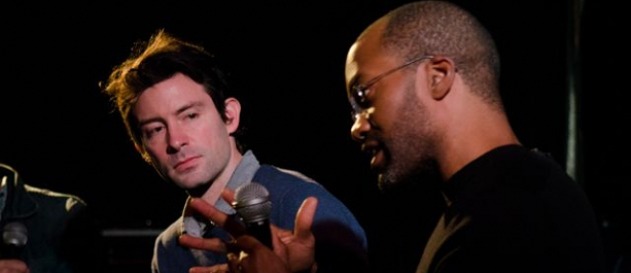
What can Night of the Living Dead (1968) tell us about the inner workings of the zombie brain? How did artificial intelligence research inform the “character” of HAL 9000 in 2001: A Space Odyssey (1968)? These are just some of the subjects addressed in Science on Screen, a lively and inventive national program that pairs popular films with cutting edge science through screenings accompanied by presentations by scientists and technology experts.
The program is the brainchild of The Coolidge Corner Theatre Foundation, in collaboration with one of its long-term members, Richard Anders, and is supported by the Alfred P. Sloan Foundation. At the Coolidge Corner Theatre in Brookline, Massachusetts, Woody Allen’s Sleeper (1973)—the story of a man who is revived after being frozen for 200 years—was paired with a presentation by Harvard Stem Cell Institute Executive Director Brock Reeve. In another program, the Tampa Theatre presented a talk by Professor Randy Criss of the University of South Florida Department of Physics about the science behind Mel Brooks’s classic comedy Young Frankenstein (1974).
Since 2005, over 60 programs have taken place at the Coolidge Corner Theatre alone, with many more held at other venues including the California Film Institute, San Rafael, California and Cinema Arts Centre, Huntington, New York.
Reaction to one Science on Screen program even prompted the creation of a new work: after his well-received presentation on zombies, psychiatrist Dr. Steven C. Scholzman went on to author a book on the subject, Zombie Autopsies: Secret Notebooks from the Apocalypse (2011, Hachette Digital, Inc.), which in turn inspired Night of the Living Dead writer/director George Romero to develop a new film. The success of Science on Screen has led Sloan and Coolidge to expand the program further to 20 independent film theaters in Fall 2012, with another 20 grants to be awarded in Fall 2013.
“The goal of the Coolidge’s Science on Screen series has always been to enlighten through entertainment,” says Coolidge Corner Theatre Executive Director Denise Kasell. “We try to keep things interesting and fun by presenting a wide range of films and pairing them with speakers in unexpected ways. Over the past two years, it has been such a privilege to work with the Sloan Foundation and to witness Science on Screen being adopted by art house theaters across the country. It’s clear that audiences are hungry for this kind of creative, thoughtful, film-plus programming.”
Doron Weber, Vice President of Programs at the Alfred P. Sloan Foundation says, "Not only do these films offer fun and original ways to engage with science, but the screenings provide the filmmakers we support with a unique distribution platform, the culmination of a Sloan development pipeline that begins with film schools and progresses to screenplay development and production via a pioneering “farm system” of science-in-film partners. The Sloan Foundation is thrilled to partner with the Coolidge Corner Theatre in expanding this exciting series."
The venues participating in the Science on Screen program are members of the Art House Convergence, an annual gathering of independent art house operators organized by the Art House Project and the Sundance Institute. The members of the Art House Convergence and other cinemas like them around the country have a direct and lasting impact on their communities, providing the public with access to films that otherwise cannot be seen on the big screen. The availability of provocative and entertaining programs such as Science on Screen is a clear example of how independent cinemas can take audiences well beyond the multiplex.
Science on Screen is a program of the Alfred P. Sloan Foundation and the Coolidge Corner Theatre. More information on Science on Screen grants, including how to apply, can be found on The Coolidge Corner Theatre Foundation website.
Image credits, clockwise from top: Director Shane Carruth and Dr. Clifford V. Johnson at a post-screening discussion of Primer, at which Johnson spoke about the physics of time. Photo by Charles Constantine.
TOPICS